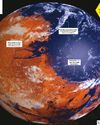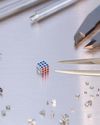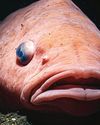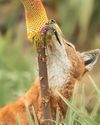
When you look up at a clear night sky, you see space: a vast, seemingly infinite expanse that contains everything humans know to exist. To find out what lies beyond, a good place to start is to figure out where the universe ends. The problem is, scientists don’t know where space ends or if it ends at all.
The observable universe
The furthest humans can see out into space, using all the technology currently available to us, is 46 billion light-years (a light-year is the distance that light can travel in one year, and is equal to about 9.5 million kilometres). The volume of space that humans can see is called the observable universe. We don’t know what is out there beyond this. Perhaps it’s more galaxies and stars and space. Perhaps it’s the edge of the universe. Some think that the universe is infinite, meaning space goes on forever in every direction. In this case, there is nothing after space, because space is everything.
Life on the edge
Esta historia es de la edición Issue 66 de The Week Junior Science+Nature UK.
Comience su prueba gratuita de Magzter GOLD de 7 días para acceder a miles de historias premium seleccionadas y a más de 9,000 revistas y periódicos.
Ya eres suscriptor ? Conectar
Esta historia es de la edición Issue 66 de The Week Junior Science+Nature UK.
Comience su prueba gratuita de Magzter GOLD de 7 días para acceder a miles de historias premium seleccionadas y a más de 9,000 revistas y periódicos.
Ya eres suscriptor? Conectar

Are cats smarter than dogs?
They're the UK's top pets, but which is more intelligent? You decide!

Could people turn Mars into another Earth?
Sven Bilén explores how humans might make a home on another world.

FUNNY BY NATURE
Claire Karwowski tracks down the wackiest wildlife that's cracking up the animal kingdom.

WEIRD SCIENCE
A round-up of the strangest science stories from around the world.

Guardians of the forest
Meet the incredible people protecting the Amazon rainforest.

The Mariana Trench
Dive in to find out how far down the ocean goes and what it's really like at the bottom.

Megan McCubbin
Meet the zoologist trying to change people's views of animals with a bad rep.

MAX POWER
From the second you wake up in the morning, your way of life is made possible thanks to the amazing power of electricity.

Your heart has a "brain"
New research by scientists at Sweden, and Columbia University, in the US, suggests that your heart could have its own \"mini brain\".

Ethiopian wolves could be furry pollinators
Sweet-toothed Ethiopian wolves have been seen lapping up nectar have been seen happing up nectar from red hot poker flowers.